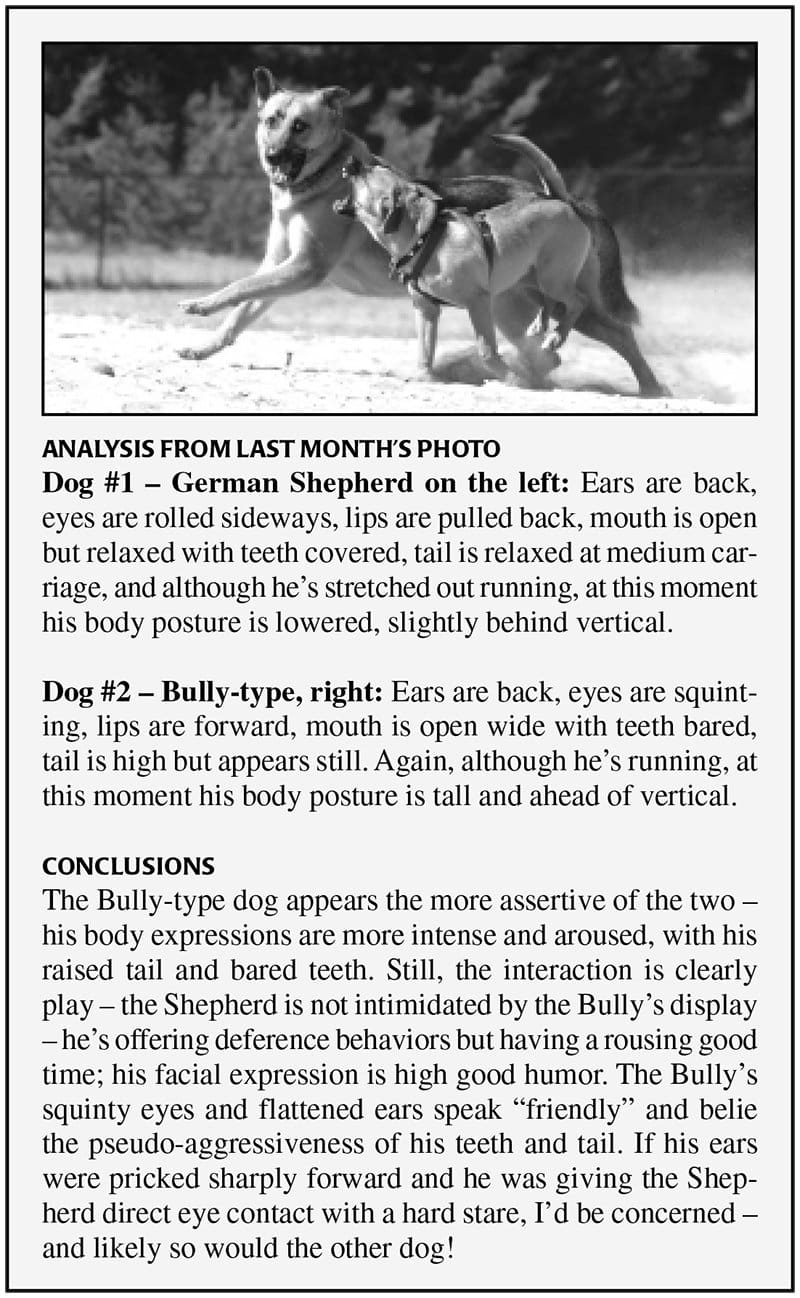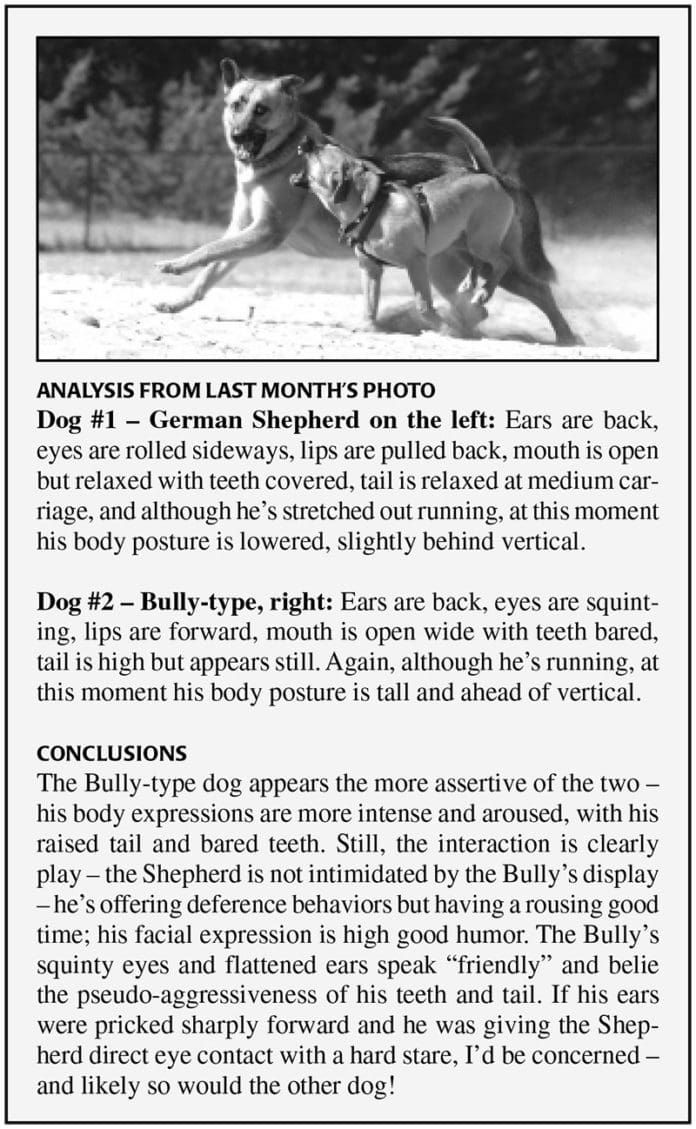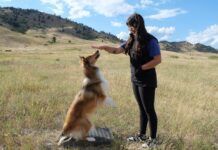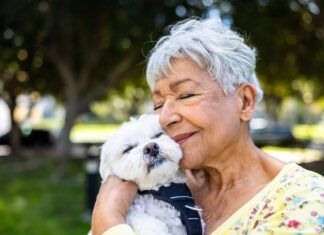You may have noticed a theme in the photos we provided last month for the exercise in body language translation. (See “Understanding How Your Dog Communicates,” November 2005.) In each picture there were body language expressions that to a novice observer might have indicated pending serious aggression: tails stiffly raised, mouths agape with teeth bared, tension in body posture …

In each case, however, the moment frozen in time precedes the onset or continuation of clear and appropriate social behavior rather than agonistic (aggressive) expression.
It’s not uncommon for humans to misread perfectly normal play behavior and interrupt/separate dogs who are having a rousing good time together. At the end of Week 2 of my group good manners classes – and every week thereafter – we have play sessions where the dogs get to play with their canine classmates. In each new class there is at least one owner, often more, who is very tense about her dog’s play behavior. I narrate body language descriptions and explanations as the dogs play, and watch owner stress levels diminish as they come to understand what their dogs are really saying to each other.
A good technique to use when looking at body language is to analyze first, draw conclusions second. Let’s do that with last month’s photos (above and under “More Examples”). Then, try your hand at a blank photo, also under “More Examples”. It involves interaction between a dog and a person. Do your analysis, draw your conclusions, and then compare them to our comments here.
PLEASE NOTE:
The photos you see in this article were taken in dog parks. Some of the dogs are wearing collars and harnesses that we don’t like. More importantly, dogs should not wear any gear when playing in groups. We’ve heard of far too many dog fatalities (death by choking, usually, or a broken neck) and injuries caused by one dog getting his jaw caught in another dog’s collar or harness.







Where are the photos? There is no “More example” link anywhere on the screen. It’s great that WDJ promotes the chance to increase & test our knowledge but only if that offer is available. I hope WDJ is not just another bait & switch website.